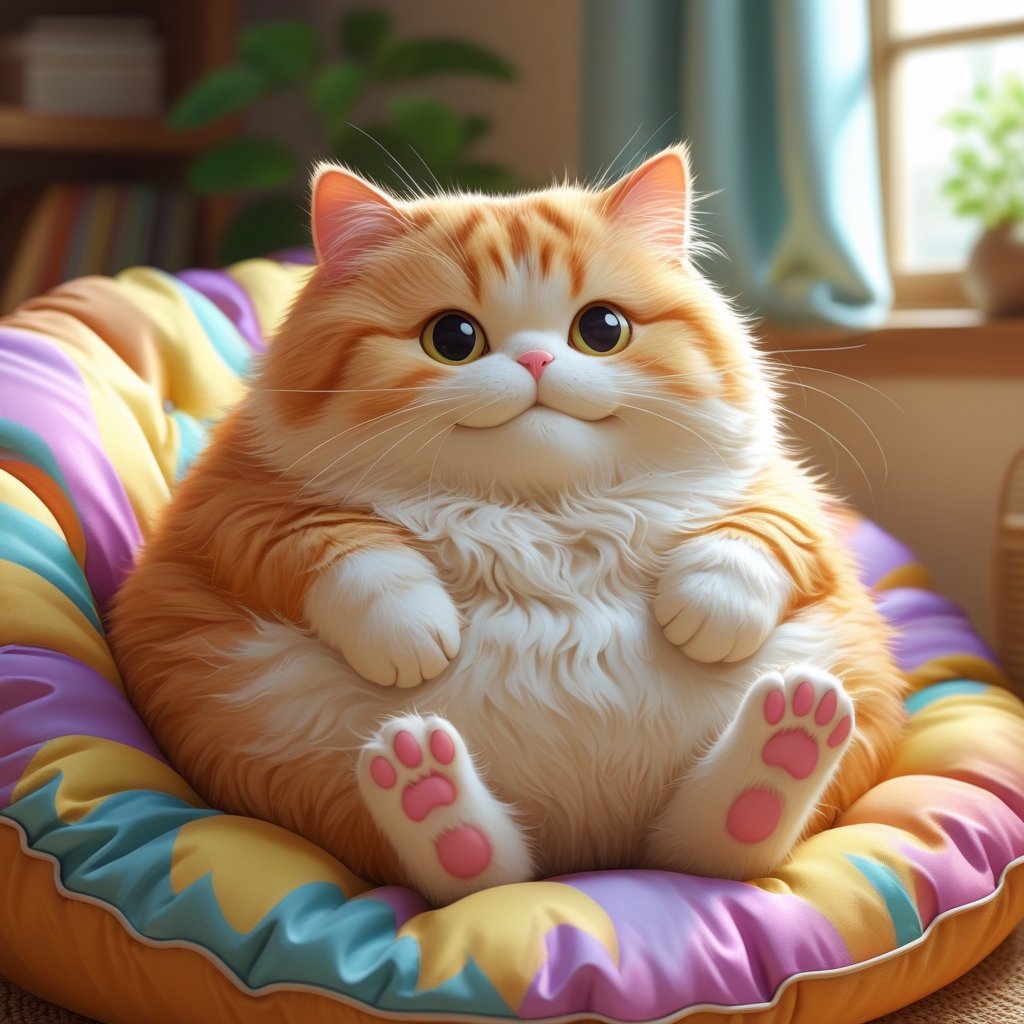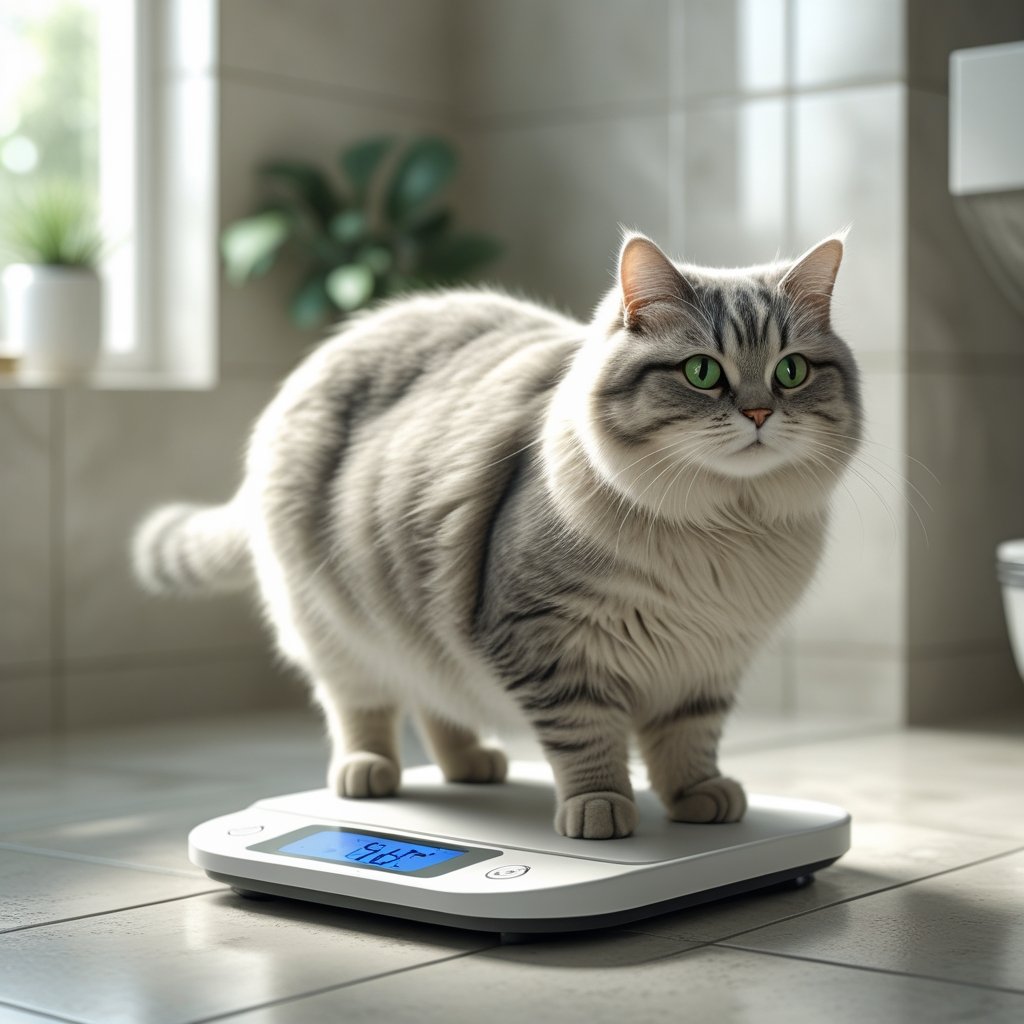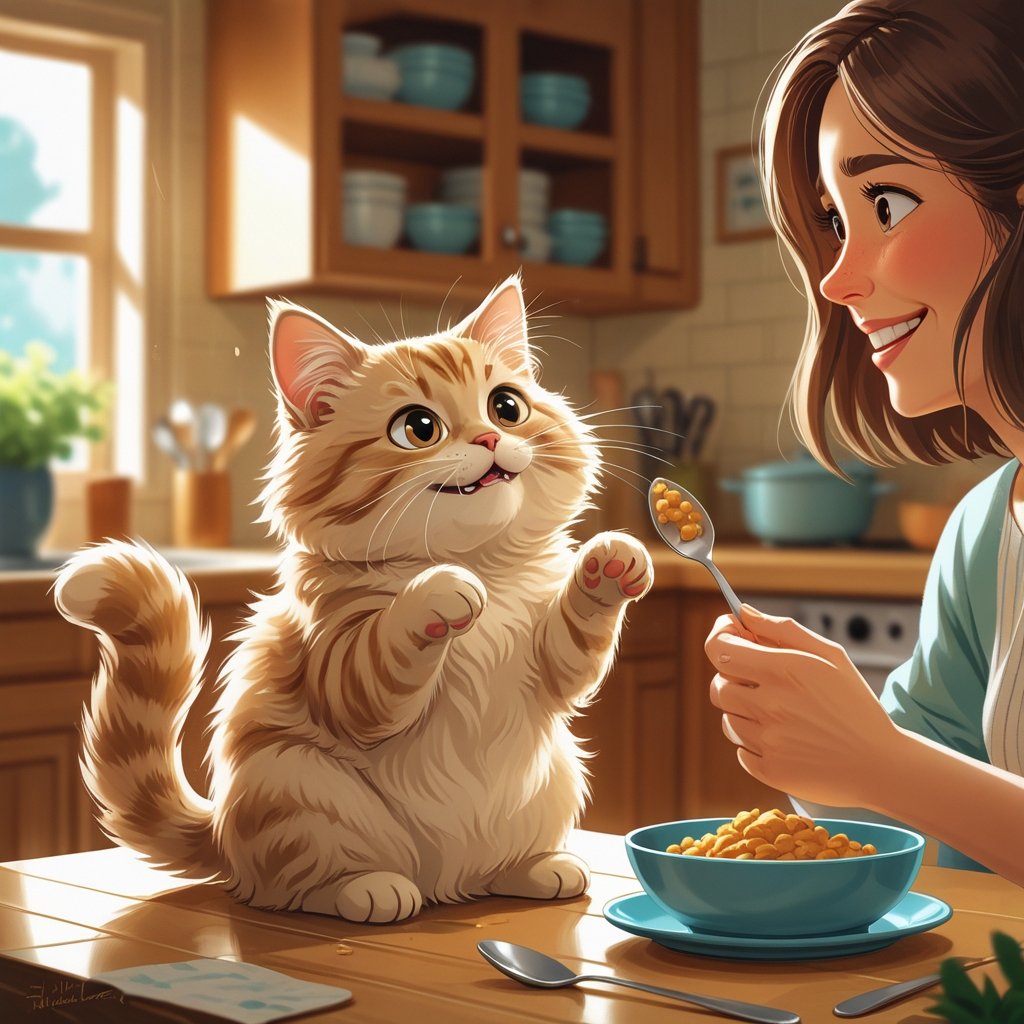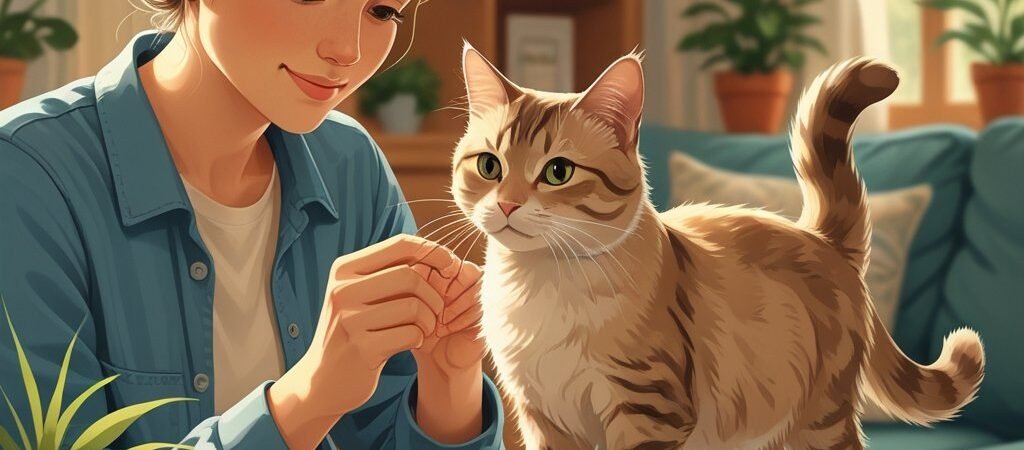Meta Description: Learn how to identify if your cat is overweight with our expert guide. Discover safe weight loss strategies, health risks of feline obesity, and prevention tips for a healthier cat.
Cat obesity has become a silent epidemic affecting over half of all domestic cats in North America, yet many loving cat parents don’t realize their feline friend is carrying dangerous excess weight. Unlike the obvious signs we might notice in overweight humans, cats can be surprisingly good at hiding their weight gain behind fluffy coats, sedentary lifestyles that seem normal, and their natural ability to appear dignified regardless of their size.
The consequences of feline obesity extend far beyond cosmetic concerns. Overweight cats face significantly increased risks of diabetes, arthritis, heart disease, and shortened lifespans. However, the good news is that with proper assessment, dedication, and veterinary guidance, most overweight cats can achieve and maintain healthy weights that dramatically improve their quality of life.
Understanding how to accurately assess your cat’s body condition, recognize the health implications of excess weight, and implement safe, effective weight management strategies empowers you to take control of your cat’s health and potentially add years to their life. Let’s explore the comprehensive approach to identifying, understanding, and addressing feline obesity with proven, veterinarian-approved methods.

Understanding Cat Body Condition: Beyond the Scale
While weighing your cat provides useful data, body condition scoring offers a more accurate assessment of whether your cat is at a healthy weight. Veterinarians use a standardized system that evaluates your cat’s physical appearance and feel rather than relying solely on numbers.
The Body Condition Score System
Ideal Body Condition (Score 4-5/9):
- Ribs are easily felt but not visible
- Waist is visible when viewed from above
- Abdomen tucks up slightly when viewed from the side
- Minimal fat covering over the chest and abdomen
Overweight (Score 6-7/9):
- Ribs are difficult to feel due to fat covering
- Waist is barely visible or absent when viewed from above
- Abdomen may hang slightly when viewed from the side
- Moderate fat deposits over the chest and abdomen
Obese (Score 8-9/9):
- Ribs are very difficult or impossible to feel
- No waist visible – cat appears round when viewed from above
- Abdomen hangs noticeably when viewed from the side
- Significant fat deposits over chest, abdomen, and back
Physical Assessment Techniques
The Rib Check: Place your hands on either side of your cat’s chest. You should be able to feel their ribs easily without pressing hard. If you need to apply pressure to feel the ribs, your cat likely has excess weight.
The Waist Test: Look down at your cat from above while they’re standing. You should see a visible “waist” or indentation behind the ribs. If your cat looks round or oval from above, they may be overweight.
The Profile Check: View your cat from the side. Their belly should tuck up slightly from the chest to the hind legs. If the abdomen hangs down or appears to sag, this indicates excess weight.
The Base-of-Tail Assessment: Feel the area where the tail meets the body. You should be able to feel the bones easily without significant fat padding.

Breed Considerations: Size Doesn’t Equal Health
Different cat breeds have varying natural body sizes and structures that affect weight assessment. Understanding your cat’s breed characteristics is crucial for accurate evaluation.
Large Breed Considerations
Maine Coons and other naturally large breeds can weigh 15-25 pounds while maintaining perfect body condition. These gentle giants require assessment based on body condition rather than absolute weight, as their substantial bone structure and muscle mass naturally create higher numbers on the scale.
Norwegian Forest Cats and Ragdolls also fall into the large breed category where weight alone doesn’t indicate health status.
Small and Medium Breed Standards
Siamese and other oriental breeds typically weigh 8-12 pounds when healthy, with their lean, athletic builds making excess weight more obvious.
Persian and Himalayan cats may appear heavier due to their coat density, making hands-on assessment particularly important.
American Shorthairs represent the “average” cat size, typically weighing 8-15 pounds when healthy.
Health Risks of Feline Obesity: The Hidden Dangers
Understanding the serious health implications of excess weight motivates effective action and helps prioritize your cat’s weight management journey.
Diabetes Mellitus: The Preventable Disease
Overweight cats are 3-5 times more likely to develop Type 2 diabetes than cats at ideal weight. Excess body fat creates insulin resistance, forcing the pancreas to work harder until it can no longer produce adequate insulin.
Early Warning Signs:
- Increased thirst and urination
- Increased appetite with weight loss
- Lethargy and weakness
- Sweet or acetone breath odor
Prevention Through Weight Management: Maintaining ideal body weight significantly reduces diabetes risk and can even help diabetic cats achieve remission in some cases.
Joint Problems and Arthritis
Extra weight puts tremendous stress on joints, cartilage, and bones, leading to:
- Accelerated arthritis development in weight-bearing joints
- Reduced mobility and reluctance to jump or climb
- Chronic pain that decreases quality of life
- Muscle atrophy from reduced activity levels
Cardiovascular Complications
Heart Disease: Excess weight forces the heart to work harder, potentially leading to cardiac enlargement and decreased function.
High Blood Pressure: Obesity contributes to hypertension, which can damage kidneys, eyes, and other organs.
Breathing Difficulties: Fat deposits around the chest and abdomen can restrict lung expansion and compromise breathing.
Liver Disease
Hepatic Lipidosis: When overweight cats lose weight too quickly or stop eating, fat can accumulate in the liver, creating a life-threatening condition requiring immediate veterinary intervention.
Safe Weight Loss Strategies: The Veterinary-Approved Approach
Successful feline weight loss requires a carefully planned, gradual approach that preserves muscle mass while reducing fat stores. Never attempt rapid weight loss in cats, as this can trigger dangerous health complications.
Veterinary Consultation: The Essential First Step
Comprehensive Health Assessment: Rule out underlying medical conditions that might contribute to weight gain or complicate weight loss efforts.
Target Weight Determination: Establish realistic weight loss goals based on your cat’s individual body condition and breed characteristics.
Medical Monitoring: Regular check-ins ensure weight loss progresses safely and allows for plan adjustments as needed.
Dietary Management: The Foundation of Weight Loss

Calorie Restriction: Reduce daily caloric intake by 10-20% from maintenance requirements, typically resulting in 1-2% body weight loss per week.
High-Protein, Low-Carbohydrate Diets: Choose foods with at least 45% protein and less than 10% carbohydrates to preserve muscle mass during weight loss.
Prescription Weight Management Foods: Veterinary therapeutic diets are specifically formulated to promote safe weight loss while meeting nutritional requirements.
Portion Control Methods:
- Measure all food portions using a kitchen scale or measuring cup
- Divide daily food allowance into multiple small meals
- Eliminate free-feeding and establish scheduled meal times
- Account for all treats and snacks in daily calorie calculations
Exercise Enhancement: Building Activity Gradually

Interactive Play Sessions: Engage your cat in 5-10 minute play sessions 2-3 times daily using wand toys, laser pointers, or motorized toys.
Environmental Enrichment: Create opportunities for natural movement through:
- Multi-level cat trees and climbing structures
- Food puzzles and treat-dispensing toys
- Hide food portions around the house to encourage “hunting”
Swimming Therapy: Some cats benefit from supervised water therapy, particularly those with joint issues that limit land-based exercise.
Common Weight Loss Challenges and Solutions
Understanding and preparing for typical obstacles increases the likelihood of successful long-term weight management.
The Begging and Manipulation Phase
Increased Vocalization: Cats often become more vocal when food portions are reduced. Respond with attention and play rather than food.
Emotional Manipulation: Cats may act as if they’re starving or appear pathetic to convince family members to provide extra food.
Solutions:
- Ensure all family members understand and commit to the weight loss plan
- Redirect attention-seeking behavior toward play and interaction
- Use food-dispensing toys to make meals last longer and feel more satisfying
Multi-Cat Household Complications
Food Competition: Other cats may steal the dieting cat’s food or vice versa.
Different Dietary Needs: Not all cats in the household may need weight management.
Management Strategies:
- Feed cats in separate rooms or use feeding stations
- Consider automatic feeders with microchip activation
- Monitor all cats to ensure proper food distribution
Plateau Periods
Natural Weight Loss Slowdowns: As cats lose weight, their metabolic rate may decrease, slowing progress.
Reassessment and Adjustment: Work with your veterinarian to modify the plan when weight loss stalls for more than 2-3 weeks.
Monitoring Progress: Tracking Success Safely
Regular monitoring ensures weight loss progresses at a safe pace while maintaining your cat’s overall health and wellbeing.
Weekly Weight Checks
Home Monitoring: Use a digital scale to track weekly weight changes. Aim for 1-2% body weight loss per week.
Record Keeping: Maintain a weight log with dates, weights, and notes about behavior or appetite changes.
Red Flag Indicators:
- Weight loss exceeding 3% per week
- Loss of appetite or lethargy
- Vomiting or diarrhea
- Behavioral changes or depression
Body Condition Reassessment
Monthly Hands-On Evaluation: Reassess body condition score monthly to ensure fat loss rather than muscle loss.
Progress Photos: Take monthly photos from above and from the side to document visual changes.
Veterinary Check-Ins: Schedule follow-up appointments every 4-6 weeks to monitor progress and adjust plans as needed.
Prevention: Maintaining Ideal Weight Long-Term
Once your cat reaches their ideal weight, preventing regain requires ongoing commitment and lifestyle management.
Transition to Maintenance Feeding
Gradual Calorie Increase: Slowly increase daily calories to maintenance levels while monitoring for weight regain.
Continued Portion Control: Maintain measured feeding rather than returning to free-feeding.
High-Quality Nutrition: Choose foods that support lean body mass and provide sustained satisfaction.
Lifestyle Modifications
Regular Exercise Routine: Maintain daily play sessions and environmental enrichment to support ongoing activity.
Stress Management: Address factors that might trigger overeating or reduced activity.
Family Education: Ensure all household members understand the importance of maintaining your cat’s healthy weight.
Special Considerations for Senior Cats
Older cats face unique challenges in weight management that require modified approaches and increased veterinary oversight.
Age-Related Factors
Slower Metabolism: Senior cats may need fewer calories but still require high-quality nutrition to maintain muscle mass.
Mobility Issues: Arthritis or other age-related conditions may limit exercise options.
Medical Complications: Underlying health conditions common in senior cats may affect weight loss strategies.
Modified Approaches
Gentler Exercise: Focus on low-impact activities and shorter, more frequent play sessions.
Joint Support: Consider supplements or medications to improve comfort during increased activity.
Frequent Monitoring: Senior cats may need more frequent veterinary check-ins during weight loss programs.
When to Seek Emergency Care
While gradual weight loss is safe, certain situations require immediate veterinary attention.
Emergency Warning Signs
- Complete loss of appetite for more than 24 hours
- Rapid weight loss exceeding 3% per week
- Vomiting, diarrhea, or lethargy
- Difficulty breathing or open-mouth breathing
- Yellowing of gums, eyes, or skin (indicating possible liver problems)
Frequently Asked Questions About Cat Weight Management
Q: How long should it take for my cat to lose weight safely?
A: Safe weight loss occurs at 1-2% of body weight per week. A 15-pound cat needing to lose 3 pounds should achieve this goal in approximately 10-15 weeks with proper management.
Q: Can I use the same diet food for all my cats if only one needs to lose weight?
A: Weight management foods are safe for cats at ideal weight but may not provide optimal nutrition for growing kittens, pregnant/nursing cats, or cats with specific medical needs. Consult your veterinarian for multi-cat feeding strategies.
Q: Why did my cat stop losing weight even though I’m following the plan?
A: Weight loss plateaus are normal as metabolism adjusts. Your veterinarian may need to further reduce calories or modify the exercise plan. Never reduce calories below veterinary recommendations without professional guidance.
Q: Is it normal for my cat to seem hungrier during weight loss?
A: Yes, increased food-seeking behavior is common. Combat this with increased play sessions, food puzzles, and scheduled meal times rather than additional food.
Q: Can treats be included in a weight loss plan?
A: Yes, but treats should not exceed 10% of daily calories. Choose low-calorie options or use portions of the regular diet as training rewards.
Conclusion: Your Cat’s Health Journey Starts Today
Recognizing and addressing feline obesity is one of the most impactful steps you can take to improve your cat’s quality of life and longevity. While the process requires patience, consistency, and veterinary guidance, the rewards of seeing your cat become more active, comfortable, and healthy make every effort worthwhile.
Remember that successful weight management is not just about reaching a target number on the scale – it’s about improving your cat’s overall body condition, mobility, and wellbeing. The physical assessment techniques we’ve discussed, combined with safe weight loss strategies and ongoing monitoring, provide a comprehensive approach to feline weight management.
Your cat depends on you to make healthy choices on their behalf. By taking action today, whether that’s scheduling a veterinary consultation, implementing portion control, or increasing daily play sessions, you’re investing in years of improved health and happiness for your beloved feline companion.
The journey from overweight to healthy weight may take several months, but the destination – a more active, comfortable, and vibrant cat – makes every step of the process worthwhile. Your dedication to your cat’s health is a gift that keeps giving through improved quality of life, reduced disease risk, and the joy of watching your cat rediscover their natural energy and playfulness.
Have you successfully helped a cat lose weight? Share your tips and success stories in the comments below!
Ready to start your cat’s weight management journey? Check out our recommendations for portion control tools, interactive exercise toys, and high-quality weight management foods that make healthy living easier for both you and your cat.
Related Articles You Might Enjoy:
- “Common Health Problems in Cats (and Prevention Tips)”
- “The Maine Coon: Giant Gentle Cats Everyone Loves”
- “15 Funniest Cat Behaviors Explained”
- “Can Cats See in the Dark? Vision Myths Busted”
Keywords: cat overweight, feline obesity, cat weight loss, overweight cat, cat body condition, feline weight management, cat diet, healthy cat weight, pet obesity, cat health

